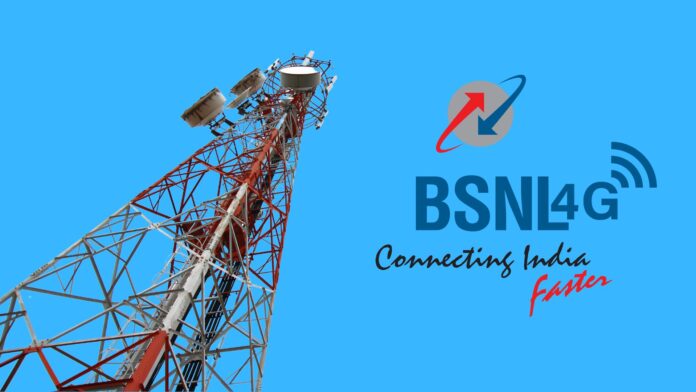India’s state-run telecom operator, Bharat Sanchar Nigam Limited (BSNL), has reached a key milestone with 39,000 4G sites now fully operational across the country, marking a significant step in its ambitious plan to deploy 1 lakh 4G sites by mid-2025. With Tata Consultancy Services (TCS) leading the project in collaboration with Tejas Networks and the Centre for Development of Telematics (C-DOT), BSNL aims to modernize its infrastructure and expand connectivity, especially in rural India. But what does this mean for consumers? Will BSNL’s network overhaul be enough to compete with private players?
Progress in BSNL’S 4G Site Deployment
BSNL’s 4G expansion is advancing rapidly, with 49,000 sites installed and 39,000 already commissioned and operational. The momentum is backed by the delivery of equipment for approximately 58,000 to 59,000 sites, with an additional 10,000 to 12,000 delivered in October 2024 alone. According to N. Ganapathy Subramaniam, Advisor for Telecom Strategic Initiatives at TCS and Chairman of Tejas Networks, the project is hitting its stride, installing and commissioning 450 to 500 sites per day, setting the pace for completing the 1 lakh site target by mid-2025.
This fast-tracked deployment is expected to significantly enhance it’s service quality and coverage, particularly in rural areas where telecom infrastructure has traditionally been lacking. The impact of this expansion, however, will also extend to urban regions where the company has plans to address congestion and capacity issues.

BSNL’s Multi-Band Strategy and the 700 MHz Band Advantage
One of the key features of the company’s new 4G network is its reliance on the 700 MHz band, known for its excellent propagation characteristics, particularly in rural areas where long-distance coverage is critical. This band provides broad coverage, allowing fewer towers to cover larger areas, which is essential for rural connectivity.
However, in urban centers, BSNL will complement the 700 MHz band with other frequency bands, including 2100 MHz, 1800 MHz, 850 MHz, and 900 MHz. This multi-band strategy is designed to offer greater capacity and improve data speeds in densely populated areas. Despite the 700 MHz band’s broad coverage advantage, it does have a limitation in terms of data speeds, especially compared to the higher-frequency bands used by private operators for 5G services. Notably, Jio also uses the 700 MHz band, but for 5G, while it is the only operator in India currently using this frequency for its 4G network.
This means that while it’s 4G network will provide robust coverage, particularly in rural and semi-urban regions, urban consumers might experience comparatively lower data speeds, especially as demand for high-speed internet continues to grow.
What Can Consumers Expect from BSNL’s 4G Expansion?
For BSNL’s customer base, this rollout signals a long-awaited improvement in network reliability and coverage, particularly for users in rural areas where BSNL has historically been one of the few available service providers. The expansion to 1 lakh sites will strengthen the brand’s position as a reliable alternative to private players like Jio and Airtel, particularly in regions where these operators have limited coverage.
BSNL’s 700 MHz frequency band rollout is especially beneficial for users in remote areas, providing wider coverage that translates into fewer call drops, better signal strength indoors, and improved service availability. However, urban customers may need to manage expectations. While it’s multi-band strategy will improve service in cities, it may still lag behind competitors when it comes to data speed, particularly with 5G now available through other telecom providers.
Despite these speed limitations, BSNL’s expansion should lead to a more stable and reliable network overall. This will be especially relevant for users who prioritize network stability and broad coverage over ultra-fast data speeds. Moreover, it’s longstanding affordability, coupled with improved coverage, could appeal to budget-conscious customers.

The Future of BSNL and the Indian Telecom Market
As BSNL approaches its 1 lakh site goal, industry experts suggest that further expansion will likely be needed to meet the increasing demand for high-speed mobile services in India. The telecom landscape is evolving rapidly, and while the network brand’s 4G network will offer significant improvements, the company will need to continue investing in network upgrades, potentially including 5G, to remain competitive in urban markets.
For rural consumers, the benefits of BSNL’s network expansion are clear. The use of the 700 MHz band will ensure that even the most remote areas of the country can access mobile services, bringing a new level of connectivity to regions that have been underserved. However, for the company to keep pace with the data demands of urban users, especially in the face of 5G adoption, additional efforts may be required.
In conclusion, The network company’s 4G rollout is a crucial step in its broader strategy to enhance India’s telecommunications infrastructure. With 39,000 sites already live and thousands more coming online each month, the company is on track to significantly improve connectivity across the country. While rural users will experience the most immediate benefits, urban customers may need to temper expectations regarding data speeds. For it , the journey to 1 lakh 4G sites is just the beginning of a much larger push to secure its place in India’s competitive telecom industry.

